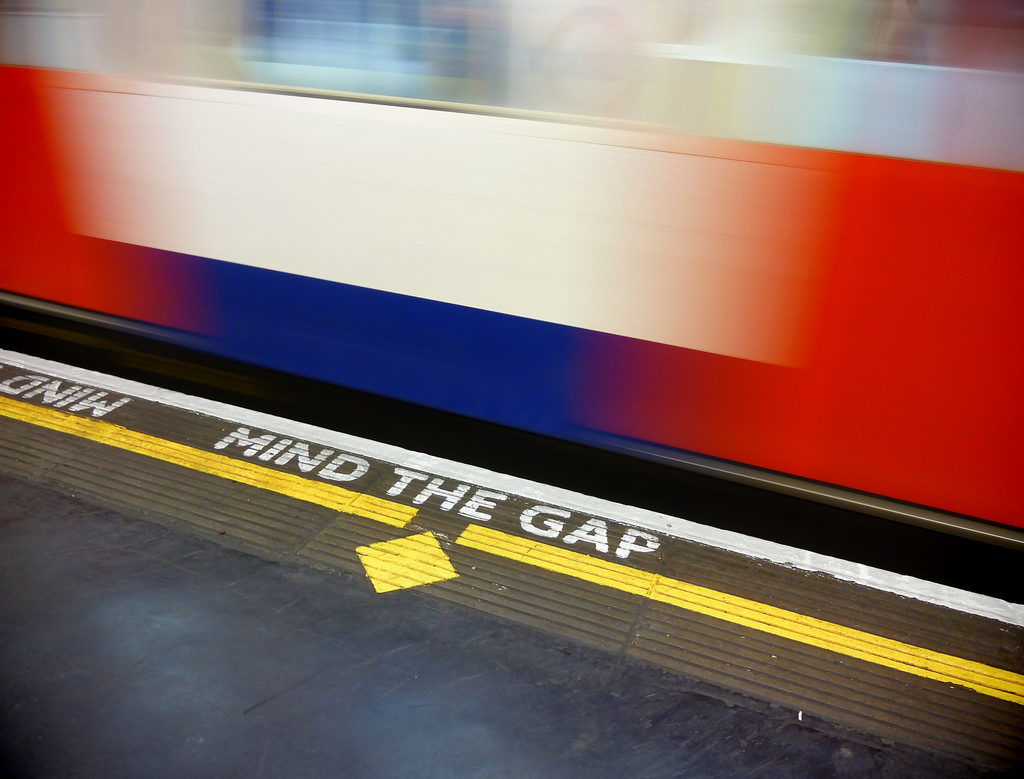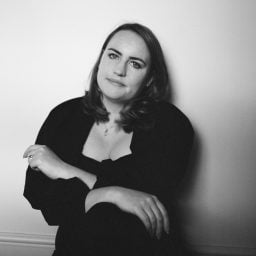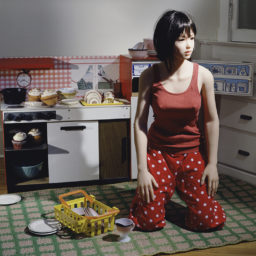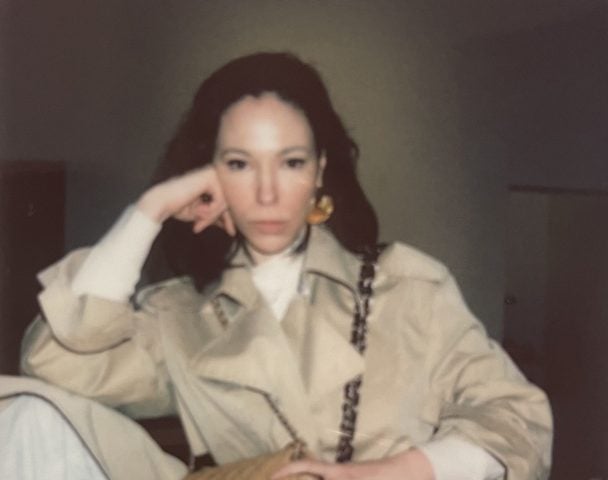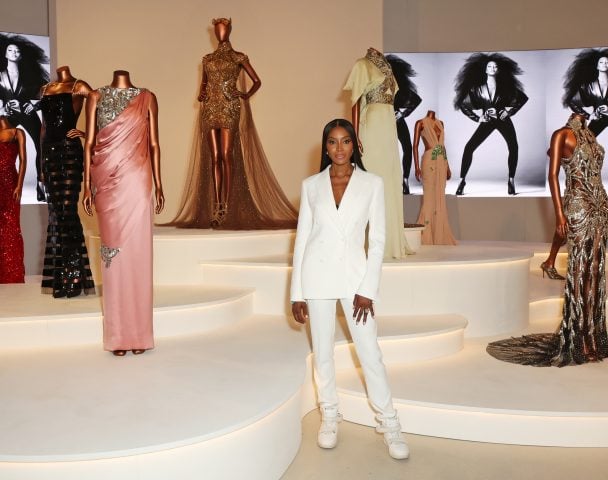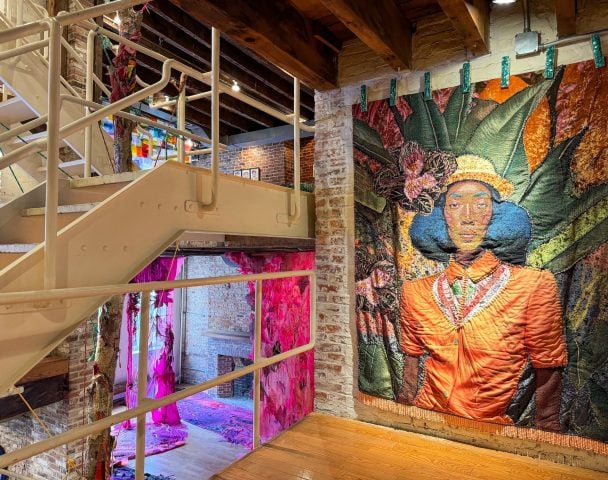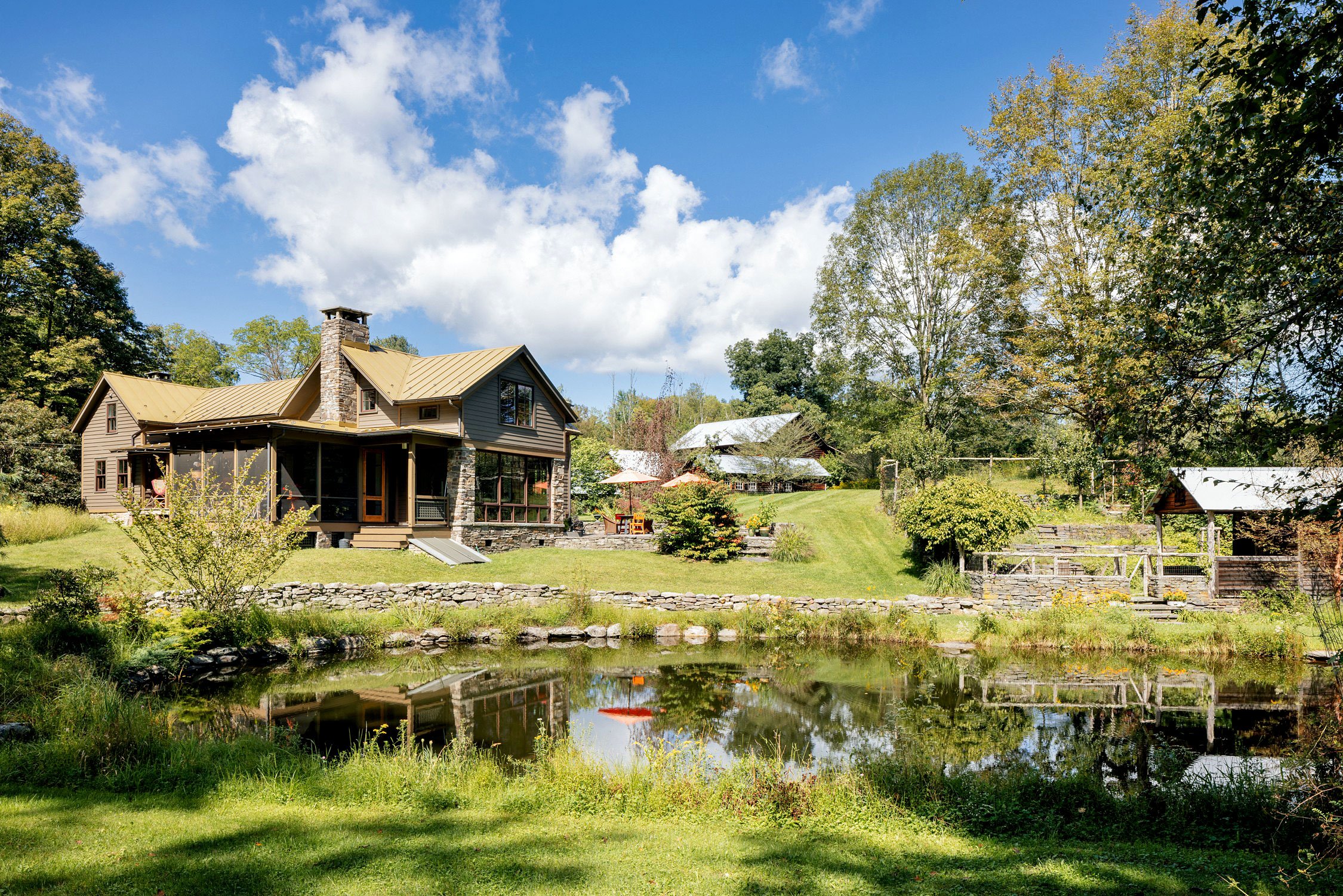Unequal pay has been against the law for more than 40 years in the UK, but the gender pay gap persists, official figures confirmed this week. The picture is not pretty in the auction houses, and while better in the UK’s largest museums, on average women are still paid less per hour than their male colleagues. In the commercial world, this is sometimes more than 40 percent less, and in museums up to 14 percent. The national average is around 18 percent in large businesses.
Taking April 5, 2017, as a snapshot, businesses employing more than 250 people were required by April 4 to report the mean and median differences between men and women’s hourly rates. Both statistics are necessary to provide an accurate picture, as the mean figures tend to be skewed by the gender balance at the top of organizations, whereas the median shows the average wage of middle earners.
Overall across all reporting businesses, the median pay gap in the UK shows women earning 9.7 percent less than men, with 78 percent of firms paying men more than women. Only 8 percent reported no gender pay gap.
Typically, more women are employed in arts organizations at every pay level, the statistics confirm, making the pay gap even more pernicious, and raising the cost of correcting the imbalance.
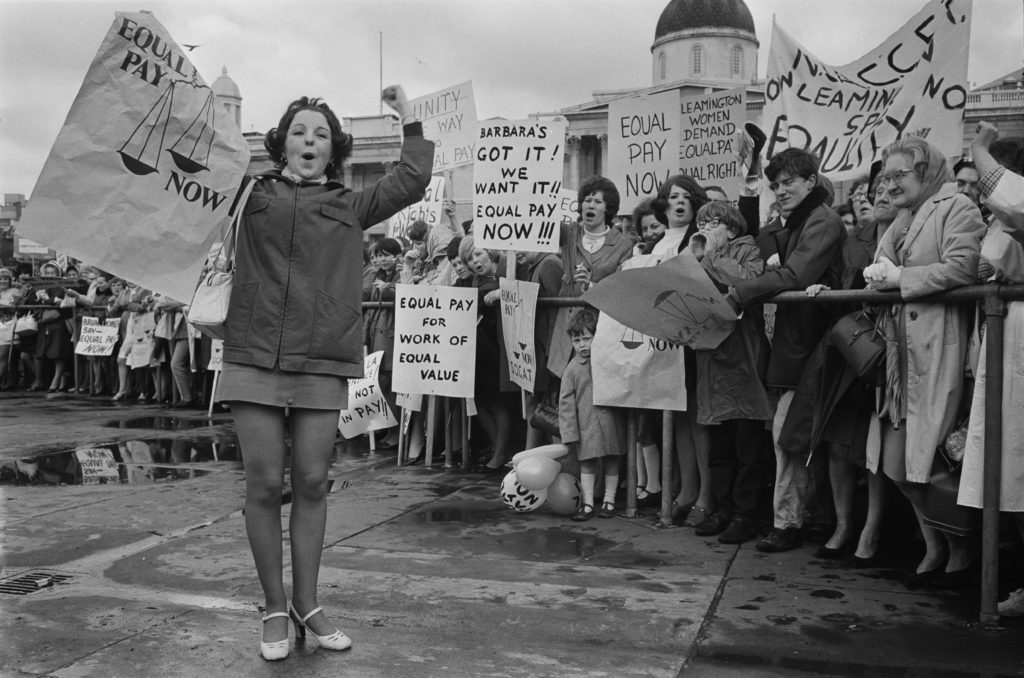
Inequality persists more than 40 years after women fought for equal pay in the UK. An equal pay for women demonstration outside the National Gallery, London, 18th May 1969. Photo by Stan Meagher/Daily Express/Hulton Archive/Getty Images.
London’s Imperial War Museum reported women are paid 2 percent less than men, and hold only 44 percent of the top paid jobs. This despite the fact there are five women on its executive board of directors, and it has a female director general, Diane Lees. She said in a statement that the institution is making progress on eradicating the gender pay gap “but any gap at all is contrary to the commitment to equality that I and our board of trustees are firmly behind.”
Lees revealed that the museum is rethinking the way it recruits staff. The HR team is going to take on name blind recruitment, for example, to eliminate unconscious bias against women.
The Tate gallery is leading the way. It now has three female directors: Maria Balshaw; Frances Morris (Tate Modern), and Ann Barlow (artistic director at Tate St Ives), which will become four when Helen Legg takes over at Tate Liverpool. At the Tate women are paid 0.2 percent (mean) or 2.4 percent (median) more than men, and hold 70 percent of the top paid jobs.
But at Tate Enterprises, which runs its catering, publishing and retail businesses, the picture is not as bright. Women are paid 1.8 percent (mean) or 3 percent (median) less hourly than men. artnet News reached out to the Tate for comment about the discrepancy but has yet to hear back by time of publishing.
Meanwhile, the Royal Academy of Arts (RA) has work to do to close its gender pay gap of around 14 percent. A spokeswoman tells artnet News it recognizes that it needs to do even better and be proactive about closing the gender pay gap. “The RA has begun to take decisive action and is committed to closing the gender pay gap by 2023,” she said. The gap is as big at the National Gallery.
Up in Scotland, Glasgow Life, the charity that runs the city’s museums as well as sporting and learning activities on behalf of council, reports much better stats, with women being paid 10.5 percent (mean) or 7.4 percent (median) more than men, and holding 63.4 percent of the top jobs. Its director of finance and corporate services, Martin Booth, explained to artnet News: “It is quite simply that we employ the best people possible to roles regardless of gender. I also think we are in an area where there is less perception of gender stereotyping which probably makes us equally attractive as a place to work than other workplaces.”
Check out some of the stats for the UK’s biggest arts organizations below.
Museums
The Victoria and Albert Museum
Difference in hourly rate: Women are paid 5.3 percent (mean) or 7.2 percent (median) less than men.
Proportion of women in the top paid jobs: 70.9 percent.
Royal Academy of Arts
Difference in hourly rate: Women are paid 14 percent (mean) or 1 percent (median) less than men.
Proportion of women in the top paid jobs: 60 percent.
British Museum
Difference in hourly rate: Women are paid 0 percent (mean) or 4 percent (median) less than men.
Proportion of women in the top paid jobs: 57 percent.
The National Gallery (fewer than 250 employees so not obliged to report)
Difference in hourly rate: Women are paid 14.4 percent (mean) or 5.2 percent (median) less than men.
Proportion of women in the top paid jobs: 62 percent.
National Portrait Gallery
Difference in hourly rate: Women are paid 8.3 percent (mean) or 13.1 percent (median) less than men.
Proportion of women in the top paid jobs: 61.4 percent.
Southbank Centre
Difference in hourly rate: Women are paid 10 percent (mean) or 18.3 percent (median) less than men.
Proportion of women in the top paid jobs: 55.4 percent.
Natural History Museum
Difference in hourly rate: Women are paid 9.8 percent (mean) or 7.5 percent (median) less than men.
Proportion of women in the top paid jobs: 43 percent.
National Museums of Scotland
Difference in hourly rate: Women are paid 4.5 percent (mean) or 15 percent (median) more than men.
Proportion of women in the top paid jobs: 60.9 percent.
National Museum of Wales
Difference in hourly rate: Women are paid 6.8 percent (mean) or 2.3 percent (median) less than men.
Proportion of women in the top paid jobs: 50.6 percent.
Art Market
Bonham’s
Difference in hourly rate: Women are paid 42 percent (mean) or 36.7 percent (median) less than men.
Proportion of women in the top paid jobs: 27 percent.
Christie’s
Difference in hourly rate: Women are paid 39.8 percent (mean) or 25 percent (median) less than men.
Proportion of women in the top paid jobs: 43 percent.
Sotheby’s
Difference in hourly rate: Women are paid 34.2 percent (mean) or 22.2 percent (median) less than men.
Proportion of women in the top paid jobs: 47.6 percent.
Universities
Royal College of Art
Difference in hourly rate: Women are paid 7.9 percent (mean) or 0 percent (median) less than men.
Proportion of women in the top paid jobs: 43 percent.
University of the Arts London
Difference in hourly rate: Women are paid 5.6 percent (mean) or 7.1 percent (median) less than men.
Proportion of women in the top paid jobs: 51.1 percent.
University College London
Difference in hourly rate: Women are paid 17.5 percent (mean) or 8.9 percent (median) less than men.
Proportion of women in the top paid jobs: 37 percent.
Government
The British Council
Difference in hourly rate: Women are paid 10.9 percent (mean) or 10.9 percent (median) less than men.
Proportion of women in the top paid jobs: 47.3 percent.
Arts Council England
Difference in hourly rate: Women are paid 6.7 percent (mean) or 2.6 percent (median) less than men.
Proportion of women in the top paid jobs: 56.9 percent.
Follow Artnet News on Facebook:
Want to stay ahead of the art world? Subscribe to our newsletter to get the breaking news, eye-opening interviews, and incisive critical takes that drive the conversation forward.
